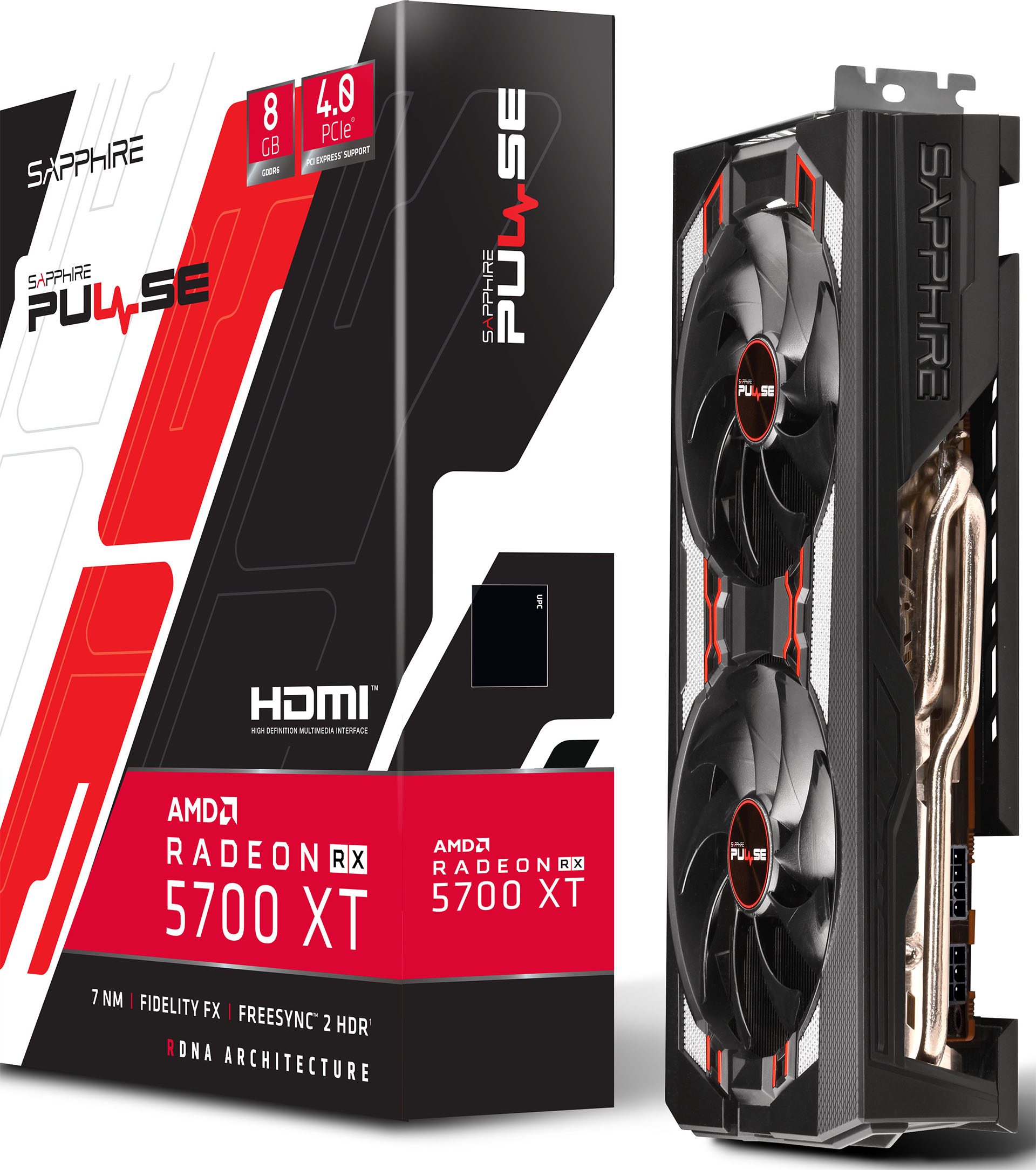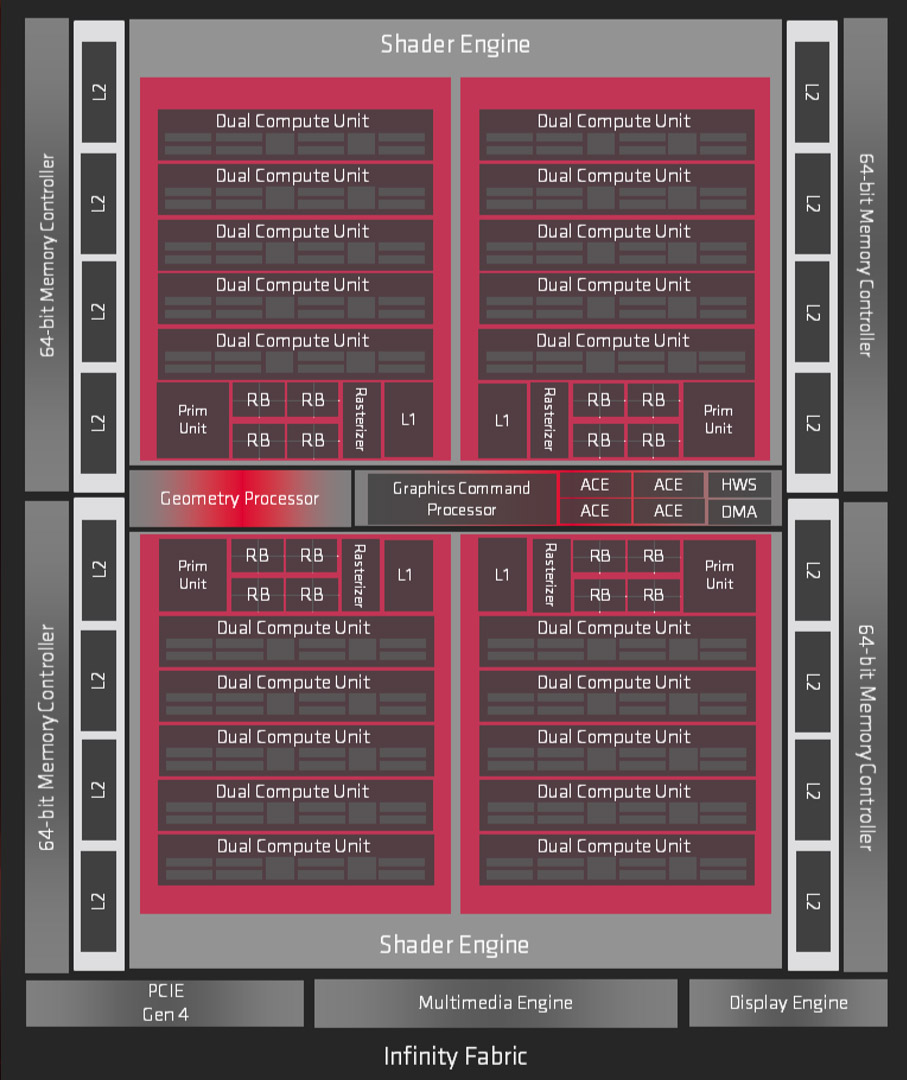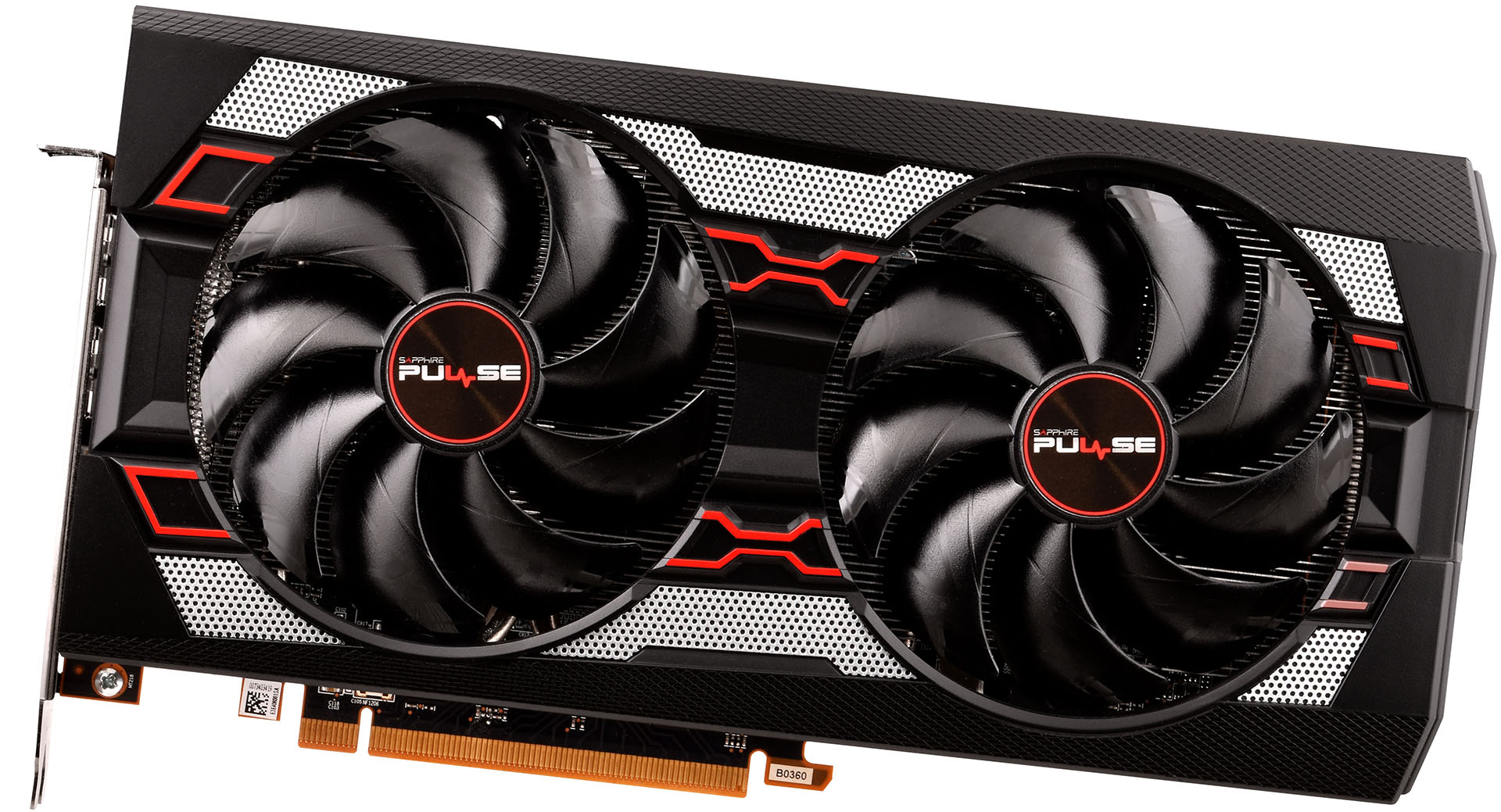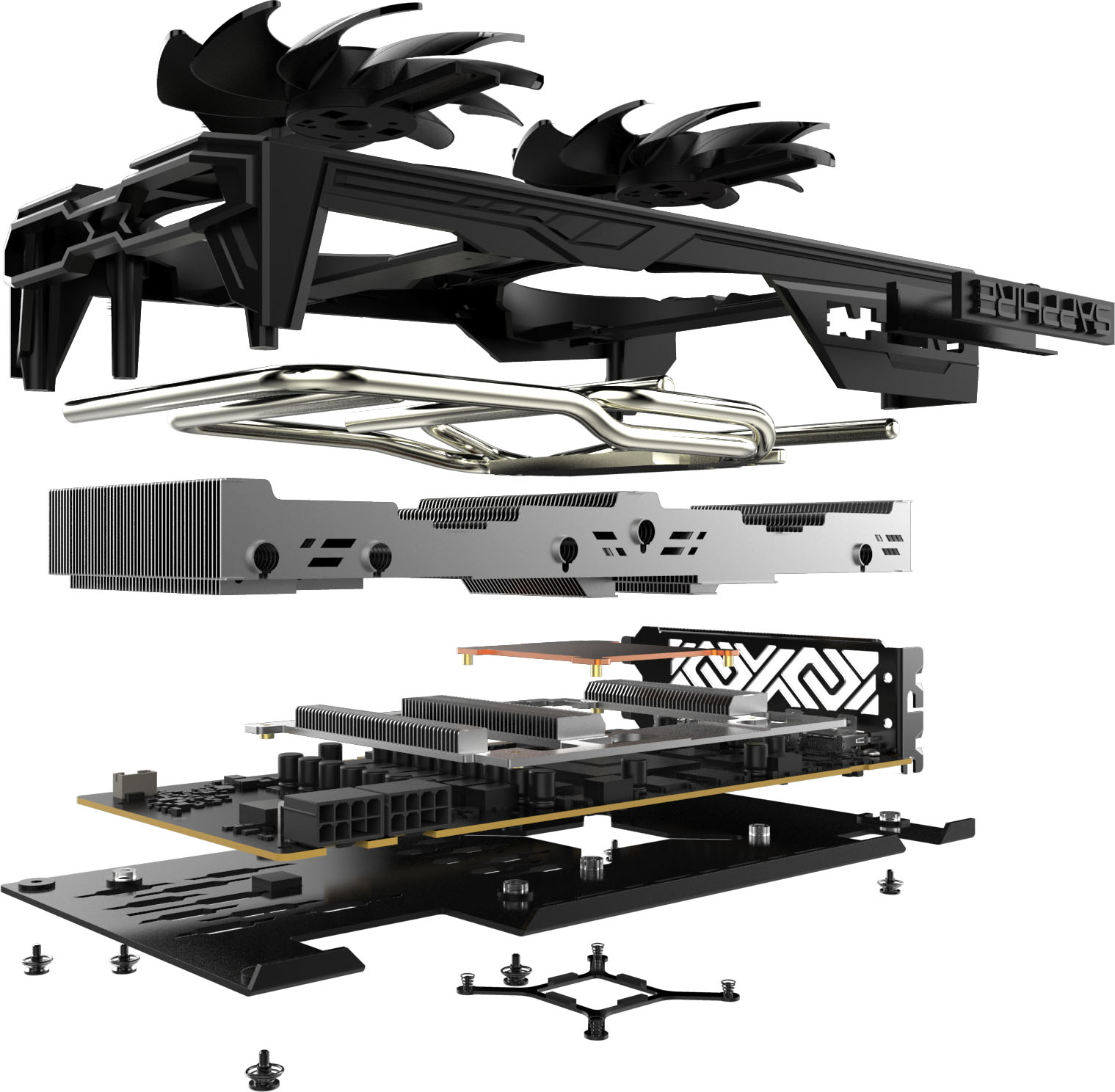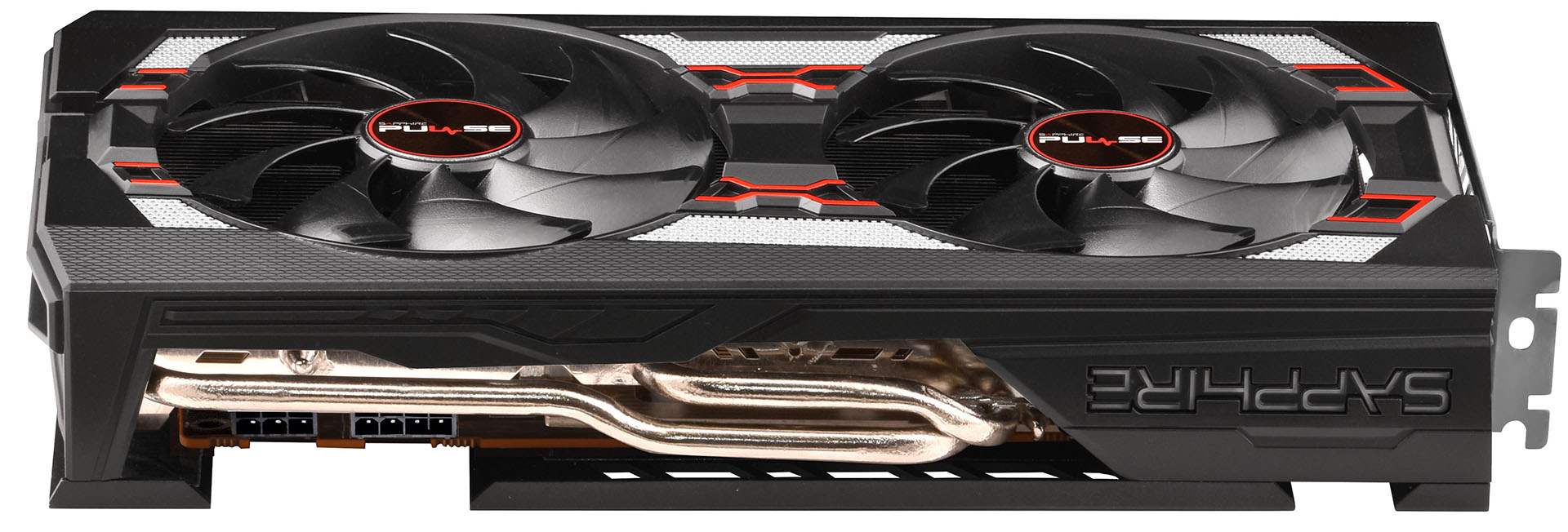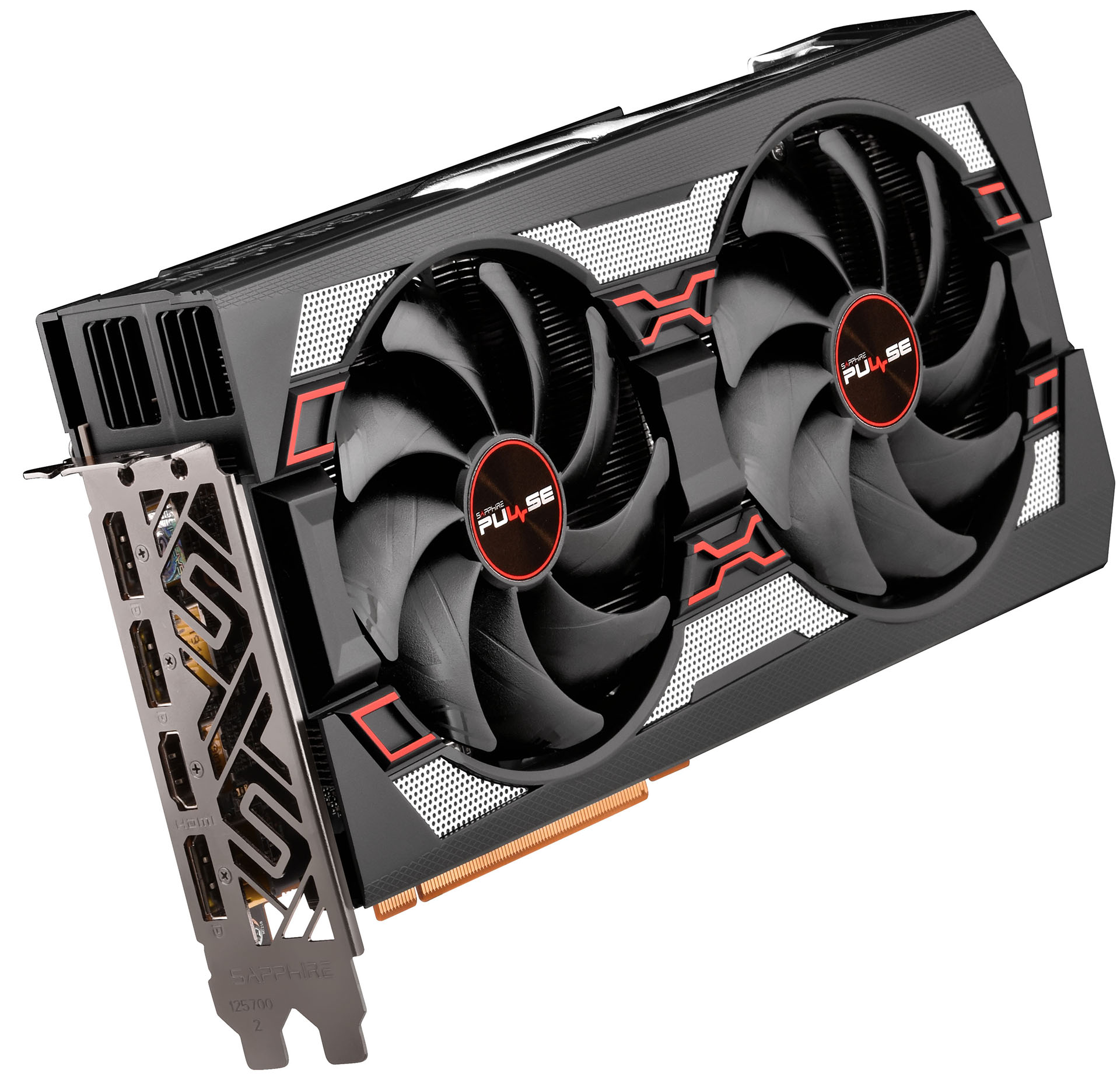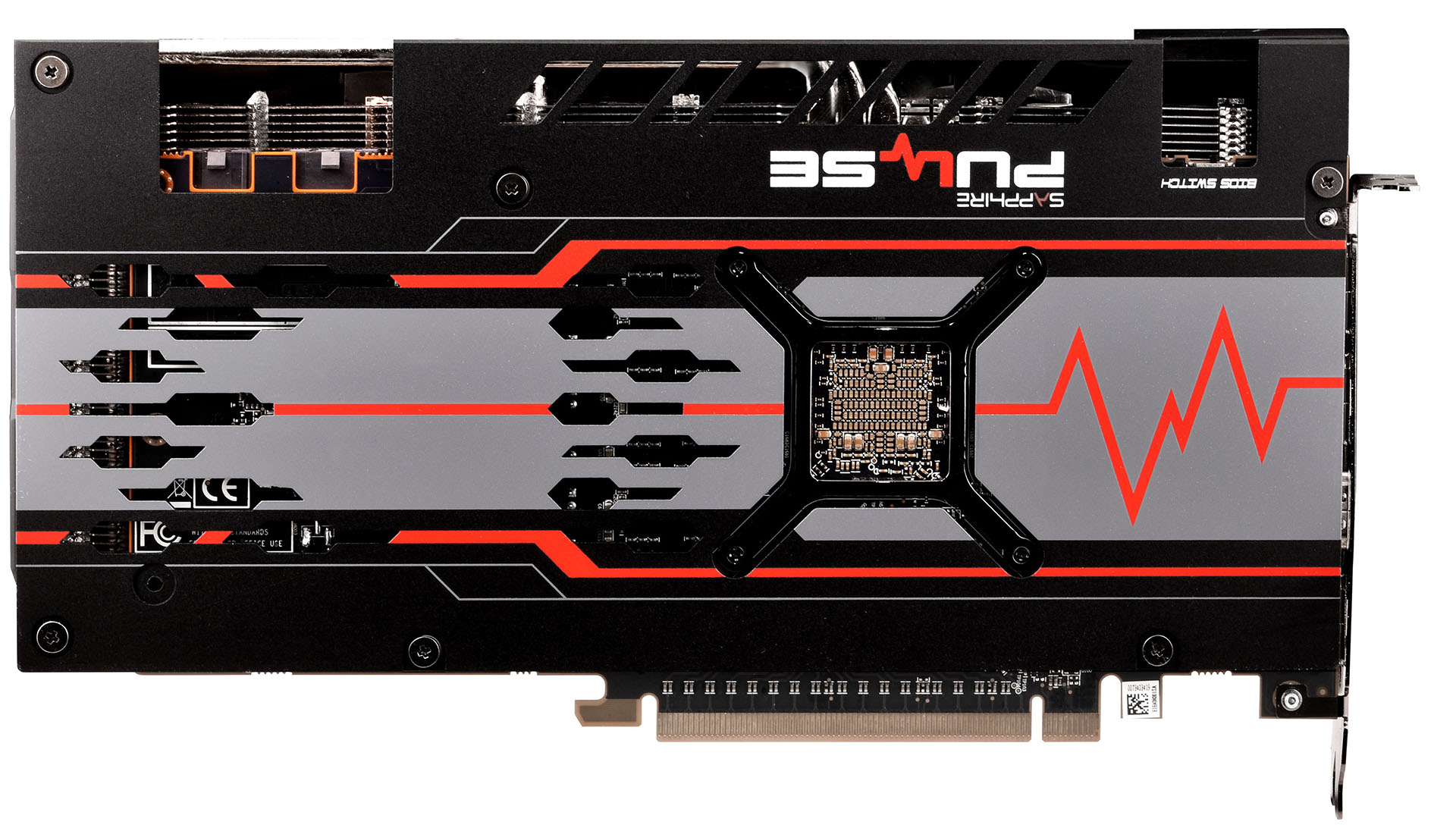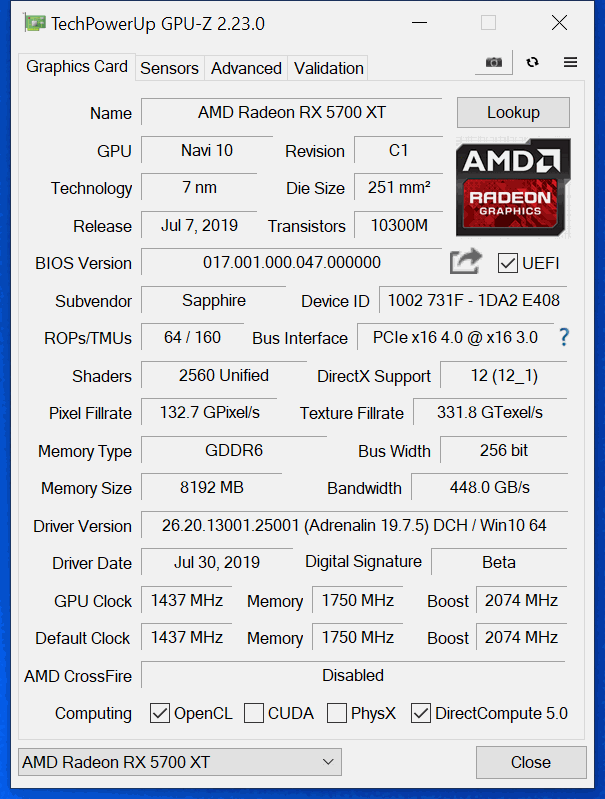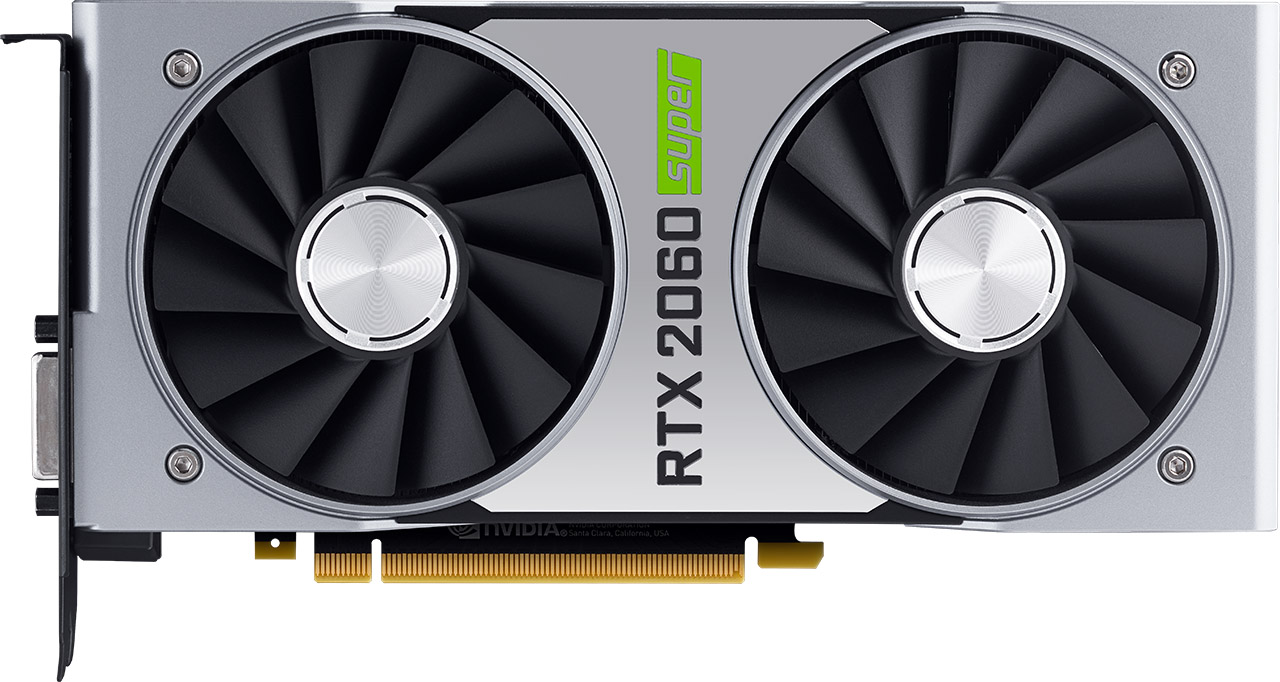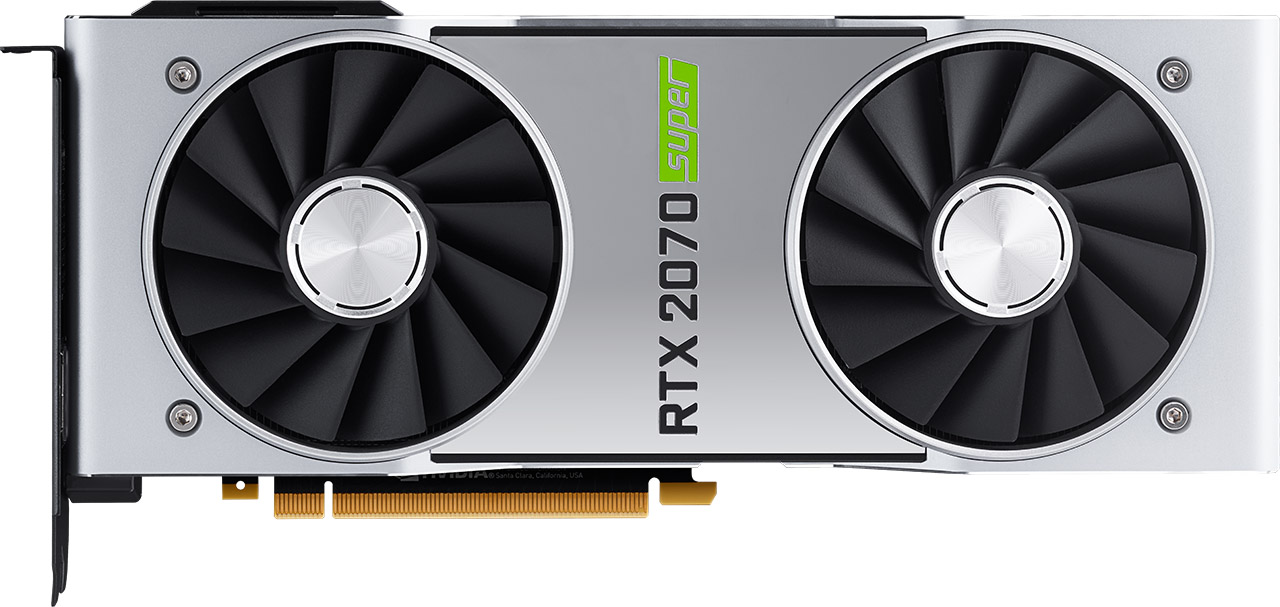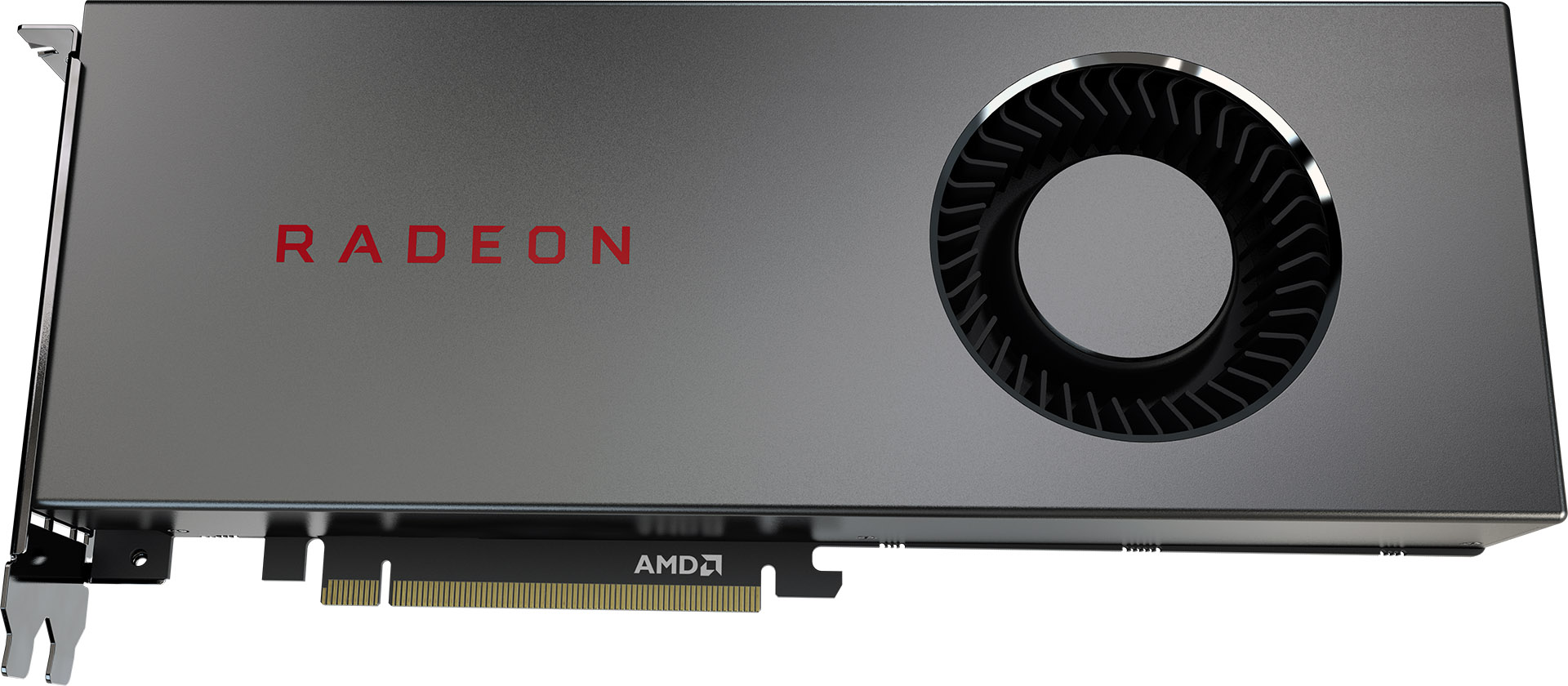Tom's Hardware Verdict
Sapphire rose up to the challenge of fixing what ailed AMD’s reference Radeon RX 5700 XT and asks that you pay an extra $10 for its efforts. That small premium includes a Dual-X thermal solution that quietly brings Navi’s temperature way down under load and a Trixx utility for easy access to overclocking. As AMD discontinues production of its own reference design and switches to selling the kit to add-in board partners, Sapphire's Pulse Radeon RX 5700 XT steps in as a superior alternative just in time.
Pros
- +
Slightly faster than AMD’s own Radeon RX 5700 XT, and roughly 10% faster than GeForce RTX 2060 Super
- +
Significantly cooler-running than the reference Radeon RX 5700 XT
- +
Dual-X thermal solution operates quietly
- +
Dual BIOS
- +
Trixx software is clean and functional
Cons
- -
Consumes more power than the reference Radeon RX 5700 XT, which was already higher than GeForce RTX 2060 Super
- -
Large cooler slightly overhangs third expansion slot, making placement an issue
- -
$410 MSRP means you’ll pay more for a Pulse Radeon RX 5700 XT compared to the least-expensive 5700 XTs and GeForce RTX 2060 Supers
Why you can trust Tom's Hardware
Sapphire Pulse Radeon RX 5700 XT Review
AMD doesn’t have a sparkling track record when it comes to building reference cards that show off new GPUs in the best light possible. They typically employ blower-style fans, which pull in air from your chassis and exhaust it out the back, making them perfect for small form factor PCs. But this type of thermal solution relies on a fast-spinning fan and consequently tends to be loud. At the same time, it’s usually less effective at dissipating heat than competing cards armed with multiple axial fans and large sinks.
To be fair, the reference Radeon RX 5700 and Radeon RX 5700 XT cards are much quieter than AMD’s previous-gen Radeon RX Vega 64 and 56. However, improved acoustics come at a cost. Our launch coverage picked up die temperatures of up to 89°C and junction temperatures in excess of 100°C under load. It’s just as well, then, that AMD is tapering off production of the reference Radeon RX 5700 XT and making the kit available to its add-in board partners. At the same time, those partners are spinning up their own designs with custom coolers and overclocked GPU frequencies.
Sapphire’s Pulse Radeon RX 5700 XT is the first of these to hit our lab. Right out of the gate, its thick heat sink and twin 95mm fans promise to tackle whatever shortcomings AMD’s version left on the table.
Meet Sapphire’s Pulse Radeon RX 5700 XT
The Pulse Radeon RX 5700 XT is based on the exact same Navi GPU found on AMD’s reference Radeon RX 5700 XT. Manufactured on TSMC’s 7nm FinFET process and composed of 10.3 billion transistors, the chip occupies a scant 251 mm². It exposes 40 RDNA Compute Units, each with 64 Stream processors, totaling 2,560 ALUs across the processor. The CUs host four texture units, just as they did in AMD’s Graphics Core Next design, adding up to 160 in a complete Navi GPU. Four render back-ends per quadrant are capable of 16 pixels per clock cycle, yielding 64 ROPs.
That’s clearly a more compact configuration than Radeon RX Vega 64, which featured 64 CUs with 4,096 Stream processors and 256 texture units. And yet our benchmarks will show that Sapphire’s Pulse Radeon RX 5700 XT averages 15.5%-higher frame rates than Vega 64. Almost 60% of the architecture’s speed-up comes from performance per clock enhancements, according to AMD. Another 25% is attributable to gains enabled by 7nm manufacturing. The reminder falls under design frequency and power improvement, which includes more effective clock gating.
Our Radeon RX 5700 XT launch coverage defined AMD’s new nomenclature for clock rate specs, which Sapphire uses as well. The reference card employs a base clock rate of up to 1,605 MHz, a Game GPU clock of up to 1,755 MHz and a Boost frequency of up to 1,905 MHz. The Pulse Radeon RX 5700 XT sports two BIOS chips that are selectable through a small switch along the card’s top edge. The secondary firmware is programmed with those reference frequencies, while the primary (and default) BIOS overclocks the base clock rate to 1,670 MHz with a Game clock of 1,815 MHz and a 1,925 MHz Boost frequency. The Game and Boost ratings are subject to certain ideal conditions, and we’d prefer to see the Boost number dropped entirely since it’s not sustainable. Realistically, you can expect to see clock rates closer to the Game GPU spec once your card warms up.
An aggregate 256-bit pathway is populated by 8GB of GDDR6 operating at 14 Gb/s. Sapphire leaves this spec alone, meaning its Pulse Radeon RX 5700 XT delivers the same 448 GB/s of memory bandwidth as AMD’s reference board. AMD claims other notable improvements throughout Navi’s memory hierarchy, from reduced congestion in its 4MB L2 cache to a new 128KB L1 cache per quadrant that helps reduce latency.
Get Tom's Hardware's best news and in-depth reviews, straight to your inbox.
Although the reference Radeon RX 5700 XT hosts a much more sophisticated GPU than Radeon RX 590 and is indeed faster than Radeon RX Vega 64, its total board power rating is 225W. Sapphire does not call out its own board power for the Pulse Radeon RX 5700 XT. However, our interposer-based measurement system determined that the primary BIOS results in ~15W-higher power consumption through gaming workloads and stress tests compared to AMD’s spec.
| Header Cell - Column 0 | Sapphire Pulse Radeon RX 5700 XT | Radeon RX 5700 XT | GeForce RTX 2060 Super | Radeon RX 5700 |
|---|---|---|---|---|
| Architecture (GPU) | RDNA (Navi 10) | RDNA (Navi 10) | Turing (TU106) | RDNA (Navi 10) |
| ALUs | 2560 | 2560 | 2176 | 2304 |
| Peak FP32 Compute(Based on Typical Boost) | 9.3 TFLOPS | 9 TFLOPS | 7.2 TFLOPS | 7.5 TFLOPS |
| Tensor Cores | N/A | N/A | 272 | N/A |
| RT Cores | N/A | N/A | 34 | N/A |
| Texture Units | 160 | 160 | 136 | 144 |
| Base Clock Rate | 1670 MHz | 1605 MHz | 1470 MHz | 1465 MHz |
| Nvidia Boost/AMD Game Rate | 1815 MHz | 1755 MHz | 1650 MHz | 1625 MHz |
| AMD Boost Rate | 1925 MHz | 1905 MHz | N/A | 1725 MHz |
| Memory Capacity | 8GB GDDR6 | 8GB GDDR6 | 8GB GDDR6 | 8GB GDDR6 |
| Memory Bus | 256-bit | 256-bit | 256-bit | 256-bit |
| Memory Bandwidth | 448 GB/s | 448 GB/s | 448 GB/s | 448 GB/s |
| ROPs | 64 | 64 | 64 | 64 |
| L2 Cache | 4MB | 4MB | 4MB | 4MB |
| TDP | 232W (measured) | 218W (measured) | 175W | 177W (measured) |
| Transistor Count | 10.3 billion | 10.3 billion | 10.8 billion | 10.3 billion |
| Die Size | 251 mm² | 251 mm² | 445 mm² | 251 mm² |
Sapphire tells us that the Pulse Radeon RX 5700 XT is based on the reference PCB with its own cooler applied on top. Just looking at the exposed components suggest that Sapphire’s board is at least a little different from what AMD sent us, though. The auxiliary power inputs are fused, for example. Plus, there are two BIOS chips. But we are still dealing with a 7+2-phase voltage regulation scheme for the GPU and GDDR6 memory.
Gone is the reference card’s vapor chamber. In its place we find a support plate with heat sinks for memory module and power supply cooling. The plate is topped with a copper spreader that gets sandwiched by an array of heat pipes. Those pipes cut through a sink that runs the board’s entire length. Horizontally-oriented fins push waste heat out a generously-sized slot bracket grille and the open back end. We favor this layout over vertical fins that blow hot air onto your motherboard.
A plastic shroud sits over the sink. It’s mostly black with perforated silver highlights and thin strips of red paint broken up by the two 95mm axial fans.
Up top, there’s enough shroud on one side for a back-lit Sapphire logo that matches our Z370 Aorus Ultra Gaming motherboard’s intense red lighting perfectly. Everything to the other side is cut out, giving us a view of two heat pipes. The eight- and six-pin power connectors are rotated by 180° so they won’t interfere with Sapphire’s heat sink. But because the heat pipes and backplate sit up so much higher than the PCB, it’s harder to plug in auxiliary power cables than on other cards.
Placement could become an issue depending on your case and motherboard layout. While a 10” length measurement isn’t out of the ordinary, it’s less common to see cards that tower 5.5 inches from the PCIe slot connector to a slightly-protruding heat pipe up top. Moreover, the combination of a bulging backplate and extra-thick fan shroud translates into a 1.875-inch width measurement. Slightly overshooting a dual-slot form factor means you’ll almost certainly have to give up an extra expansion slot below the Pulse Radeon RX 5700 XT.
Around front, Sapphire exposes the same display outputs as AMD. Three DisplayPort 1.4 connectors and one HDMI 2.0b interface run along the PCB’s edge. It’s worth noting that Navi is AMD’s first GPU with Display Stream Compression technology, supporting 4K monitors at 144 Hz through a single cable without resorting to chroma subsampling.
An aluminum plate covers most of the card’s back side. It’s a rigid piece of metal that serves to brace the PCB and anchor the shroud. Sapphire also uses thermal pads in a couple of spots to draw heat away from hot spots on the board.
Despite its size, the Pulse Radeon RX 5700 XT weighs in at 2lb 0.6oz. The reference model is quite a bit heavier (2lb 7.2oz) due to its vapor chamber-based cooler. Nevertheless, Sapphire benefits from a more free-flowing thermal solution that keeps the Navi GPU operating at lower temperatures without making much noise at all.
How We Tested Sapphire’s Pulse Radeon RX 5700 XT
We added Sapphire’s Pulse Radeon RX 5700 XT to our existing library of performance data, which was recently gathered on a brand-new platform powered by Intel’s Core i7-8086K six-core CPU on a Z370 Aorus Ultra Gaming motherboard with 64GB of a Corsair CMK128GX4M8A2400OC14 kit. We’re still using a couple of 500GB Crucial MX200 SSDs for our gaming suite, along with Noctua’s NH-D15S heat sink/fan combo.
All of this data was run ahead of last month’s GeForce RTX 2060 Super and 2070 Super launch, which was followed by the Radeon RX 5700 and 5700 XT. We started with a selection of cards relevant to the new GeForces, and then added AMD’s Radeon RX 5700-series boards. From Nvidia, that includes GeForce RTX 2080, GeForce RTX 2070, GeForce RTX 2060, GeForce GTX 1080 Ti, GeForce GTX 1080, GeForce GTX 1070 Ti, and GeForce GTX 1070. All of those cards are represented by Nvidia’s own Founders Edition models except for the 1070 Ti, which is an MSI GeForce GTX 1070 Ti Gaming 8G. AMD’s own Radeon VII is part of the comparison as well, along with Sapphire’s Nitro+ Radeon RX Vega 64 and Nitro+ Radeon RX Vega 56. Those partner cards ensure we don’t see the frequency/throttling issues encountered with our reference models.
Our benchmark selection includes Battlefield V, Destiny 2, Far Cry 5, Final Fantasy XV, Forza Horizon 4, Grand Theft Auto V, Metro Exodus, Shadow of the Tomb Raider, Strange Brigade, Tom Clancy’s The Division 2, Tom Clancy’s Ghost Recon Wildlands, The Witcher 3 and Wolfenstein II: The New Colossus.
The testing methodology we're using comes from PresentMon: Performance In DirectX, OpenGL, And Vulkan. In short, these games are evaluated using a combination of OCAT and our own in-house GUI for PresentMon, with logging via GPU-Z.
We’re using driver build 431.16 for Nvidia’s GeForce RTX 2060 and 2070 Super and build 430.86 for all the other Nvidia cards. On AMD’s side, we’re using Adrenalin 2019 Edition 19.6.3 for all three existing cards, plus 19.7.1 for the reference Radeon RX 5700-series cards and 19.7.5 for the Pulse Radeon RX 5700 XT.
MORE: Best Graphics Cards
MORE: Desktop GPU Performance Hierarchy Table
MORE: All Graphics Content
Current page: Sapphire Pulse Radeon RX 5700 XT Review
Next Page Performance Results: 2560 x 1440-
hannibal What was expected. Cooler, quiter version. Interesting to see what other vendors do and what prise.Reply -
Gillerer When employing upscaling+sharpening in games, ideally you don't want to set lower resolution, but use an in-game resolution scale under 100% instead. That way the UI elements and texts will still be rendered at the native monitor resolution and be perfectly crisp - those are where you're likely to first notice any fuzziness.Reply -
2Be_or_Not2Be Hmm... the review keeps on saying this board is "quieter" than the reference version, yet there are no Noise Level tests that show you how quiet it is (or isn't).Reply -
Blytz Ok, so if the pricing for me is generally that the AIB boards at the same price to 5% cheaper than the 2060 supers, for a card that nips at the heels of the 2070 (and sometimes the 2070 super depending on the game) I'd assume this is a no brainer for meReply -
iam2thecrowe Not sure if I'm blind, but I cant see anywhere in the article weather or not you test your gfx cards in a case? or in open air? In my experience this type of cooler can be problematic in some cases, particularly smaller cases.Reply -
AeroWB Chris, thanks for the great review. The amount of information packed in the review is amazing. I really like the inclusion of the Frames per Second by Percentile graphs. Unfortunately the graphs are a little small and the colors are sometimes so close its very hard to see what is what.Reply
Also I want to dare you to change the order of the cards in the graphs based on the 99 percentile values. The 99 percentile scores are more important to determine the experience than the old average FPS measurement.
For power consumption I'd like a graph with the power consumption from Metro with the other cards in the review, now I have to go to multiple reviews to compare.
Futher the review is lacking noise measurements while there are fan RPM, clock rate and temperature measurements. As a user I am more interested in noise than those other 3, as noise I can compare top other cards the other 3 measurements are less interesting and sometimes even incomparable.
In the conclusions you mention that its a good card but though its 10% faster than a GTX2060 Super its higher power consumption and lack of ray tracing make it a hard choice. As a user I am looking at performance per dollar first and performance per watt second, and I think that holds for most user. Now while ray tracing is nice feature it cannot be used in the majority of games and especially in this segment enabling ray tracing is a tough trade off as you probably will see more stuttering (or you will need to lower other graphics settings, can that a be good trade ever?)
So my conclusion would be reversed. The RX5700XT is the default choice in this price and only if you need to limit power consumption (for example if your case has bad cooling) or if you'd really want to do ray tracing the GTX2060 becomes the better option. Also the Sapphire RX5700XT is 10% faster on average over the average FPS of the 13 games. If we look at 99 percentile its 12% faster, again not much but still a good bit. Also the drivers are less matured so you could a expect a little more improvement from that side too.
Its not such an easy the choice as the Ryzen 3000 is compared to the Core i5/7 at this moment where the former is better in almost all aspects, but I think the RX5700XT is the better choice for most gamers shopping around this price. -
King_V Given how, with Sapphire's previous cards, the Pulse was the "good" cooler, and the Nitro/Nitro+ had the "even better" cooler, I'd be curious to see how their Nitro cooling solution does, when they release one for the 5700XT.Reply -
spigias ReplyAeroWB said:Chris, thanks for the great review. The amount of information packed in the review is amazing. I really like the inclusion of the Frames per Second by Percentile graphs. Unfortunately the graphs are a little small and the colors are sometimes so close its very hard to see what is what.
Also I want to dare you to change the order of the cards in the graphs based on the 99 percentile values. The 99 percentile scores are more important to determine the experience than the old average FPS measurement.
For power consumption I'd like a graph with the power consumption from Metro with the other cards in the review, now I have to go to multiple reviews to compare.
Futher the review is lacking noise measurements while there are fan RPM, clock rate and temperature measurements. As a user I am more interested in noise than those other 3, as noise I can compare top other cards the other 3 measurements are less interesting and sometimes even incomparable.
In the conclusions you mention that its a good card but though its 10% faster than a GTX2060 Super its higher power consumption and lack of ray tracing make it a hard choice. As a user I am looking at performance per dollar first and performance per watt second, and I think that holds for most user. Now while ray tracing is nice feature it cannot be used in the majority of games and especially in this segment enabling ray tracing is a tough trade off as you probably will see more stuttering (or you will need to lower other graphics settings, can that a be good trade ever?)
So my conclusion would be reversed. The RX5700XT is the default choice in this price and only if you need to limit power consumption (for example if your case has bad cooling) or if you'd really want to do ray tracing the GTX2060 becomes the better option. Also the Sapphire RX5700XT is 10% faster on average over the average FPS of the 13 games. If we look at 99 percentile its 12% faster, again not much but still a good bit. Also the drivers are less matured so you could a expect a little more improvement from that side too.
Its not such an easy the choice as the Ryzen 3000 is compared to the Core i5/7 at this moment where the former is better in almost all aspects, but I think the RX5700XT is the better choice for most gamers shopping around this price.
Great comment, thank you AeroWB, your conclusion is much better than Chris.(opinions respected of course) . Had to visit other tech sites for a comparisons too. Makes me wonder what happened to this site. -
Minnefornian Did they say when will the TriXX software be available for the Pulse? The current version crashes upon launch for me.Reply
